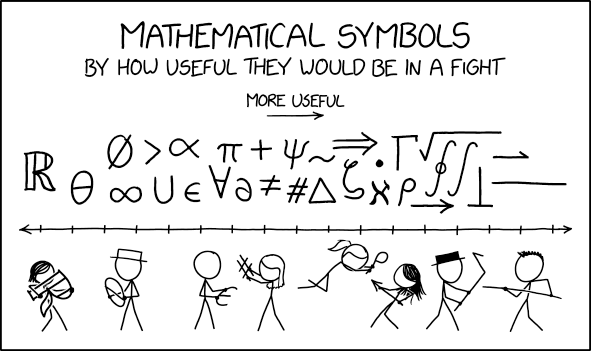library(reticulate)
use_python("/Users/chammika/miniconda3/envs/science-work/bin/python", required = TRUE)Symbolic Mathematics (Need)


What to Expect in This Chapter
There are many situations where we would like to manipulate mathematics symbolically rather than numerically. Packages such as Mathematica and Maple can perform this symbolic magic, but they are expensive. Fortunately, Python has an open-source package called SymPy that brings powerful symbolic manipulation to your fingertips.
These notes introduce symbolic mathematics using SymPy. The examples are deliberately short and practical.
Setting Up
Install and Import
You can install SymPy in the usual way (e.g. with pip or conda) and then import it as follows:
#| echo: false
def show(exp):
print('$$', sp.latex(exp), '$$', sep='')import sympy as spPretty Printing
The following is optional but I strongly recommend you do, so that things look nice.
sp.init_printing()I got the following from this Stackoverflow discuss
def _colab_latex_printer(exp, **options):
# Lightweight helper for Colab's MathJax
from google.colab.output._publish import javascript # type: ignore
url = "https://cdnjs.cloudflare.com/ajax/libs/mathjax/2.7.3/latest.js?config=default"
javascript(url=url)
return sp.printing.latex(exp, **options)
sp.init_printing(use_latex="mathjax", latex_printer=_colab_latex_printer)Basics
Declaring Symbols
Before you can use variables in SymPy, you need to declare them as symbols. This step only needs to be done once per session.
x, y, z = sp.symbols('x y z')Declaring symbols gives you full control over how they behave mathematically and how they are displayed. For example, you can specify whether a symbol should be real, positive, or an integer.
x = sp.symbols('x', real=True, positive=True)
a, b, c = sp.symbols('a b c', real=True, positive=True)Expansion
sp.expand((x + y + z)**3)\[x^{3} + 3 x^{2} y + 3 x^{2} z + 3 x y^{2} + 6 x y z + 3 x z^{2} + y^{3} + 3 y^{2} z + 3 y z^{2} + z^{3}\]
Square roots and radicals
show(sp.sqrt(8*x + 4*y + 2*z))\[\sqrt{8 x + 4 y + 2 z}\]
Substitution
hahaha = sp.symbols('hahaha')
(sp.cos(x)).subs(x, hahaha)\[\cos{\left(hahaha \right)}\]
Simplification
sp.simplify(sp.sin(x)**2 + sp.cos(x)**2)1Solving Equations
a, b, c = sp.symbols('a b c')
show(sp.solve(a*x**2 + b*x + c, x)) \[\left[ \frac{- b - \sqrt{- 4 a c + b^{2}}}{2 a}, \ \frac{- b + \sqrt{- 4 a c + b^{2}}}{2 a}\right]\]
Calculus
Differentiation
sp.diff(x**4, x)\[4x^{3}\]
Differentiate multiple times:
sp.diff(x**4, x, 3)\[24x\]
Partial derivatives
sp.diff(x*y*sp.sin(x), x) # ∂/∂x\[xy\cos(x) + y\sin(x)\]
sp.diff(x*y*sp.sin(x), y) # ∂/∂y\[x\sin(x)\]
Integration
Indefinite integrals
sp.integrate(a*sp.exp(-(x-b)**2/c**2), x)\[\frac{ac}{2}\sqrt{\pi}\,\operatorname{erf}\!\left(\frac{x-b}{c}\right).\]
Definite integrals
show(sp.integrate(a*sp.exp(-(x-b)**2/c**2), (x, -1, 1)))\[\frac{\sqrt{\pi} a c \operatorname{erf}{\left(\frac{1 - b}{c} \right)}}{2} - \frac{\sqrt{\pi} a c \operatorname{erf}{\left(\frac{- b - 1}{c} \right)}}{2}\]
show(sp.integrate(sp.exp(-x**2 - y**2), (x, -sp.oo, sp.oo), (y, -sp.oo, sp.oo)))\[\pi,\]
The latter equals \(\pi\) as expected for the Gaussian integral in two dimensions.
Leave integrals unevaluated
sp.Integral(sp.exp(-x**2 - y**2), (x, -sp.oo, sp.oo), (y, -sp.oo, sp.oo))\[\int_{-\infty}^{\infty}\int_{-\infty}^{\infty} e^{-x^{2}-y^{2}}\,dx\,dy.\]
